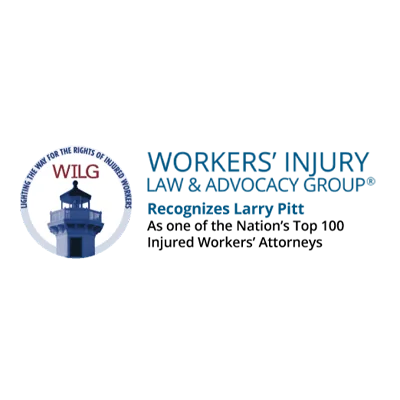Recovering
$ MILLIONS
For Injured Workers
Musculoskeletal Injuries may be Caused by Conditions in the Workplace
Musculoskeletal injuries can happen to workers in any industry. Construction, warehouse, health-care, and office workers are just some people who are at risk of work-related musculoskeletal injuries. According to the Bureau of Labor Statistics (BLS), these types of injuries accounted for approximately one-third of all worker injury and illness cases. The experienced workers’ compensation lawyers at Larry Pitt & Associates, P.C. have been committed to helping those with workplace injuries, including musculoskeletal disorders (MSDs), for more than 40 years.
GET A FREE CONSULTATION WITH LARRY PITT
Philadelphia Workers’ Compensation Lawyers at Larry Pitt & Associates, P.C. Help Workers Obtain Compensation for Musculoskeletal Injuries
If you suffered a work-related musculoskeletal injury, contact a Philadelphia workers’ compensation lawyer at Larry Pitt & Associates, P.C. You may be eligible for benefits including medical and wage loss compensation. For a free consultation, complete our online contact form or call us at 888-PITT-LAW today.. Larry Pitt & Associates helps throughout:
What Are Musculoskeletal Disorders?
“Musculoskeletal disorder” is a term used to describe various injuries affecting the muscles, tendon, joints, ligaments, and nerves. MSDs can be caused by slip and fall accidents, repetitive motions, heavy lifting, awkward positions, and other ergonomic risk factors. Most people experience pain, stiffness, swelling, or numbness in the affected area and symptoms can range from mild to severe, depending on the type and stage of the injury.
Common Types of Musculoskeletal Injuries
Musculoskeletal injuries can affect almost any part of the body, including the neck, shoulders, arms, hands, chest, back, and feet. Some of the most common types of musculoskeletal injuries our workers’ compensation lawyers have seen include:
- Carpal Tunnel Syndrome – This type of injury develops over time due to repeated use of the wrist in the same manner. Those who work on computers are at higher risk for this type of musculoskeletal injury, but it can also be caused by assembly line work, vibrating power tools, cleaning, and other repetitive tasks. Symptoms include pain, numbness, weakness, decreased dexterity, and swelling.
- Bursitis – This condition is caused when the bursa (lubricating fluid sacks between tissues) become inflamed or irritated. It often occurs due to repetitive motion; however, it can also be caused by a serious, isolated injury. Bursitis can affect various parts of the body, including the elbow, shoulder, hip, knee, and Achilles tendon. Symptoms typically include pain and loss of motion as a result of the pain and consequent immobility.
- Muscle Strains and Low Back Injuries – Pinched nerves, herniated discs, and other spinal injuries may develop over time without the proper safety measures. Workers may suffer injuries to the neck or back as a result of various factors such as heavy lifting, bending, slip and fall accidents, whiplash, machinery accidents, and sedentary work. Severe spinal injuries may cause paralysis or even death.
- Rotator Cuff Injuries – Workers who constantly lift heavy items or perform overhead activities may suffer from this painful shoulder injury. Rotator cuff injuries typically cause the muscle to become stiff and difficult to move. Construction workers, carpenters, electricians, painters, and warehouse workers are all at risk of sustaining this type of musculoskeletal injury.
Preventing Work-Related Musculoskeletal Injuries
Workplace MSDs can be prevented with ergonomics – what the Occupational Safety and Health Administration (OSHA) describes as “fitting a job to a person”. Under the general duty clause of the OSH Act, employers have a duty to provide workers with a safe and healthful workplace, free from known hazards that are likely to cause serious physical harm or death. To that end, OSHA recommends that employers implement an ergonomic process that includes elements such as:
- Management Support – Management should explain the goals and objectives of the ergonomic process and then set a good example for workers.
- Worker Involvement – Worker participation is important for both the identification of hazards and suggestions for exposure reduction.
- Training – Ensuring that workers are aware of how the ergonomic process works is necessary for it to be effective.
- Reporting – Workers should be encouraged to engage in early reporting of MSD symptoms so that they may be prevented from advancing or causing other serious injuries.
- Evaluations – Corrective action procedures may need to be taken to ensure long-term success, therefore regular evaluations should be required.
What Our Clients Say













